Although there may be flashier ways to engage your audience online these days, building a presence with a steady stream of blogs is still a great way to connect with people, build credibility, and attract new business. Blogs are a classic marketing tool. When things are classic, they’re classic for good reason – they deliver.
Here are 10 blog ideas that can elevate your fintech company’s content strategy and make you stand out from the crowd in a busy digital space.
10 examples of blog topics for fintech companies
1. Predictions for the future: analysing industry trends
Fintech moves fast. Digital payments, blockchain, contactless, cryptocurrency – these are just a few of the things your customers need to keep up with.
Discuss the latest developments and how these will shape the future of finance. Within this, you can make clear how your fintech solutions align with these emerging trends. (Don’t get TOO sales-y though)
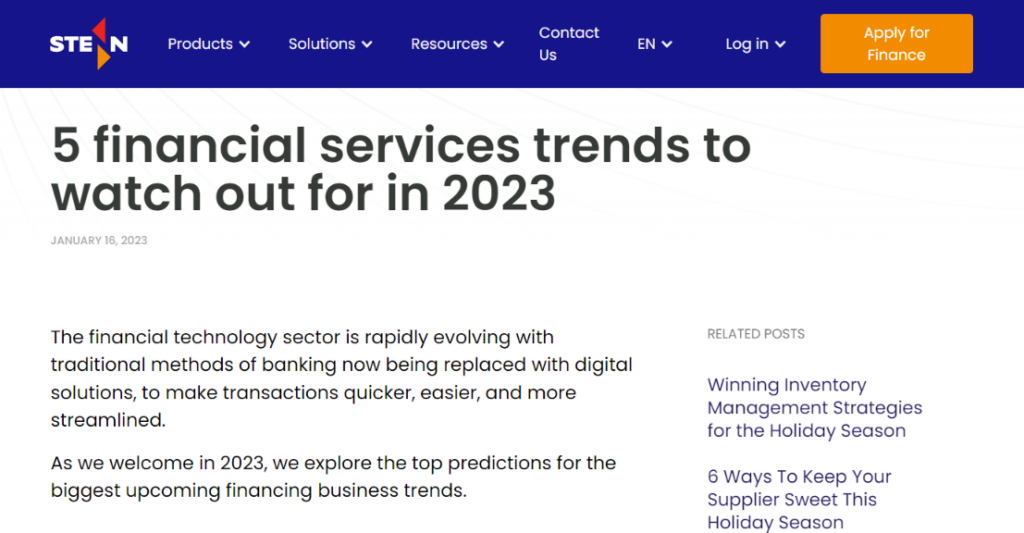
Here, Stenn, an online invoice financing firm, does just this – predicting what the year 2023 will look like in financial services. While this type of trend-based content may not be evergreen, it is engaging content for the time that it’s produced. You can also publish multiple trend articles each year, either about different specific areas or at the beginning of each quarter.
With the end of the year just around the corner, now is the time to start working on your trends of 2024 article.
2. The jargon buster
The world of fintech can seem overwhelming for newcomers. The array of industry-specific terms, acronyms, and initialisms is often a barrier to entry.
A blog that breaks down the most used bits of industry jargon by explaining things in simple language will attract beginners and make you a helpful resource.
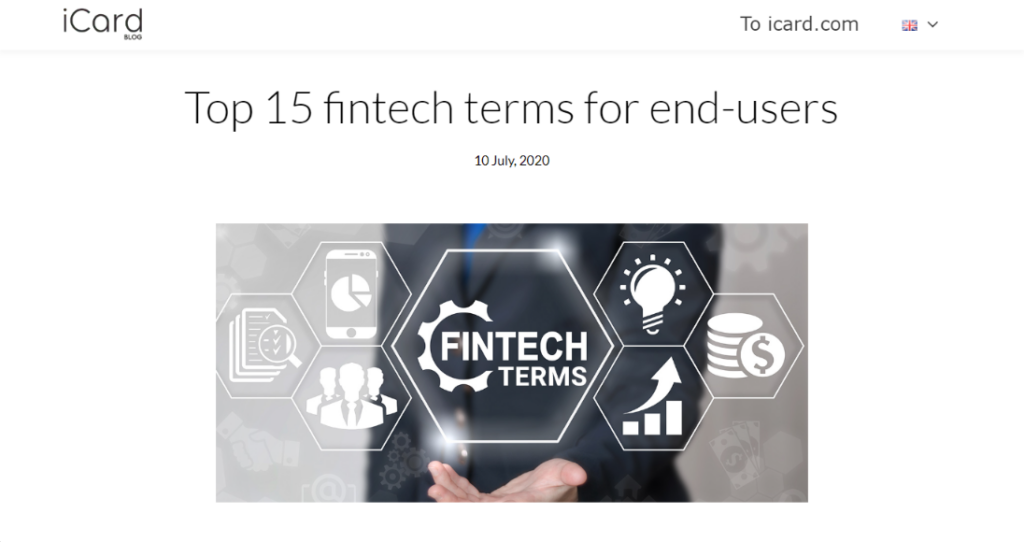
A great example of a jargon buster blog is this Top 15 fintech terms for end-users piece from iCard, a multinational electronic money issuer.
Including ‘end-user’ in the title of this blog makes it super clear who the article is for. Google’s ranking algorithm likes this because far fewer people will click on the blog and then click off straight away when they realise the piece is not for them. Very clear article titles will get you higher up the google results page.
3. Keeping safe – cybersecurity in finance
Ransomware attacks on financial services have increased from 55% in 2022 to 64% in 2023. Concerns about cyber threats are growing. Your audience wants content that addresses these concerns.
Practical tips on securing financial transactions will draw in readers. Once they are engaged, you have the opportunity to highlight how your company prioritises the safety of user data.

Peer-to-peer lending platform, Fast Invest, breaks down the challenges of cybersecurity in fintech and advises readers on which of the available cybersecurity products are most effective in given scenarios.
While Fast Invest are not promoting their own products/services directly in this piece, they are establishing themselves as a useful, trustworthy resource – a company with which their audience will want to engage again and again.
4. Top tips for financial success
Everyone wants actionable advice. Give the people what they want.
It can also be a good idea to hone in on a specific demographic – could be millennials, could be any other group – and help them with their unique financial pain points.
For millennials, you could cover topics like budgeting apps, investing strategies, and managing student loans and show that you’ve got the fintech tools that will help them.
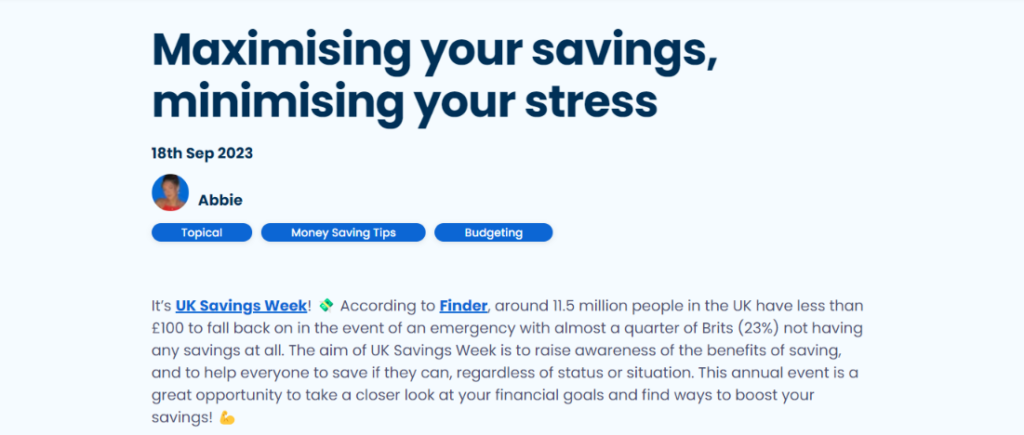
A nice example of a top tips-style blog is this one that shows readers how to improve their saving potential.
The publishers of this content are thinkmoney, a digital banking company. Although they don’t aim this piece at a specific group, they do a nice job of tying it in to an event – UK Savings Week. This makes the content both topical and evergreen
5. The big disruptor – AI in finance
AI-powered algorithms have enhanced financial decision-making, automated processes, and personalised user experiences. AI is a very big deal.
Because of its huge impact, people want a better understanding of how things really work. You need to explain how your business leverages AI to become future-proof and to offer exciting new solutions for clients.
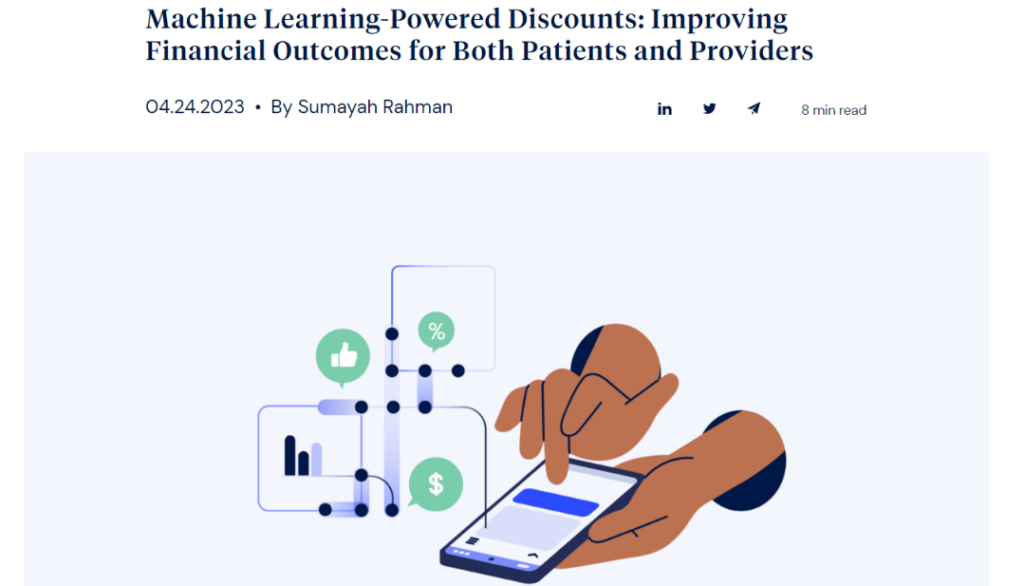
Cedar, a US-based healthcare billing platform, does a fantastic job explaining how they are using AI technology to benefit their end-users in their article about machine learning-enabled discounts for patients.
The article demonstrates Cedar’s commitment to innovation and their desire to produce positive outcomes for customers. If these qualities won’t stand you in good stead with your audience, then I don’t know what will!
6. Fintech’s positive social impact
Fintech does its bit. From green investments to carbon footprint tracking and the many other socially beneficial financial solutions on offer – they all make a difference.
By discussing these things, you can demonstrate how your brand’s values match up with your customers’ values and build a deeper connection. You can also emphasise how your fintech services align with the growing demand for sustainability in finance.

This article, which comes from Corpay – a company offering a platform that helps businesses control their outgoings – explains how fintech solutions facilitate CSR initiatives.
The article details specifically how fintech drives more charitable donations and makes for a more inclusive society by reducing the number of people who are unable to access vital financial services.
7. Staying up to speed – regulation changes in fintech
Keep your audience in the know. The regulatory landscape in the fintech industry is ever-changing, and no one wants to be left behind.
Discuss recent updates, common compliance challenges, and how you adapt and continue to create seamless experiences for your users despite evolving regulations.
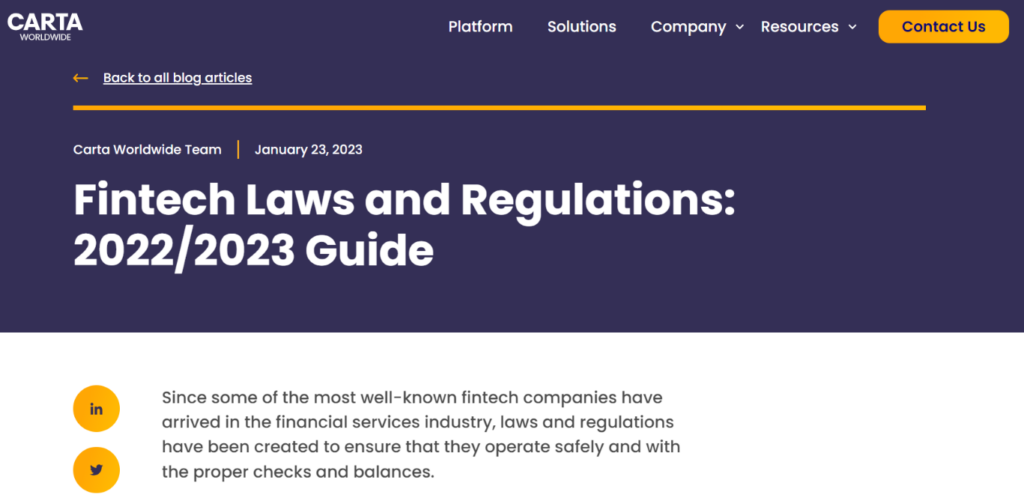
Card issuance platform provider CARTA Worldwide helped its clients stay compliant by publishing their article Fintech laws and regulations: 2022/2023 guide.
In doing this, CARTA Worldwide provide excellent value to their audience and ensure trust and future engagement with their content.
8. Show what you can do – case studies
73% of the most successful content marketers used case studies, and so they should. What builds trust more than tangible evidence of the value your company brings to the table? I can’t think of anything.
Share real-world success stories of businesses or individuals who have benefited from your fintech solutions. The best case studies illustrate how your services have solved the specific financial challenges that lots of your audience face.

This case study, which comes from digital banking service provider Q2, details how Q2 solutions benefitted Texas Security Bank.
The foregrounding of stats, use of client testimonial quotes, and the structure of this case study all serve to make it particularly effective. If you’re new to producing case studies, this one is a great example to draw from.
9. Company culture
Blogs that promote your culture build brand identity, attract top talent, and foster client trust.
Highlight your values, work environment, and employee experiences. This helps in recruiting people who align with your company values and enhances confidence in your business – positive culture often means better work.
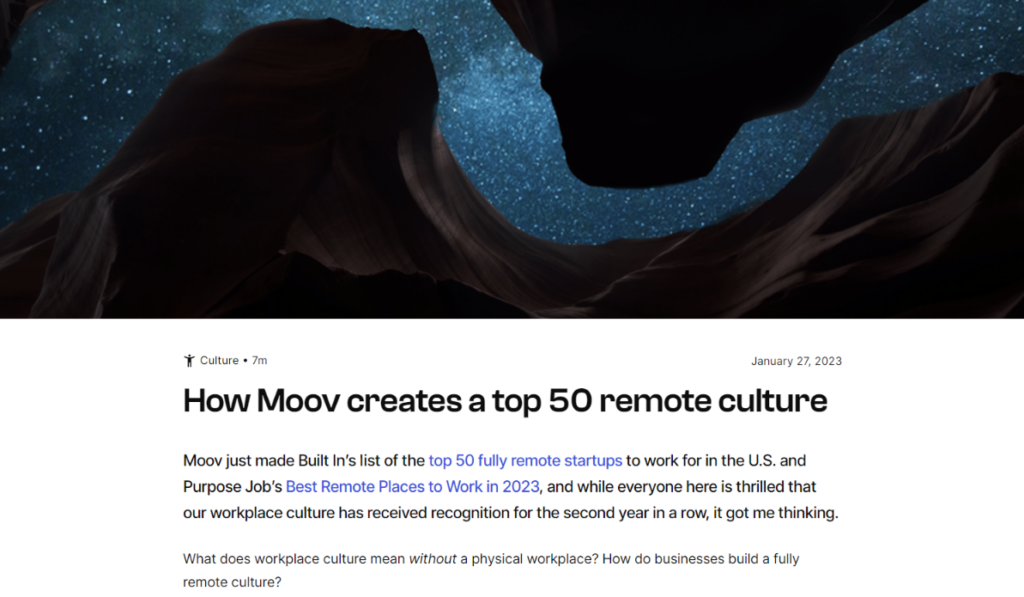
Having received recognition for the strength of the working environment, Moov, a payment processing platform provider, produced this blog about their top 50 ranked remote working culture.
If your business receives recognition like this, you’ve got to broadcast it. But, for all the reasons listed above, it’s important to post about your company culture often, not just when something special happens.
10. Announce upgrades and new products
If your products are improving or you’re bringing something new to market, the world needs to hear. Shout about it in a blog!
Informing your audience about your latest products, enhancements, and features demonstrates your commitment to continuous improvement and lets clients know how exactly these things will benefit them.
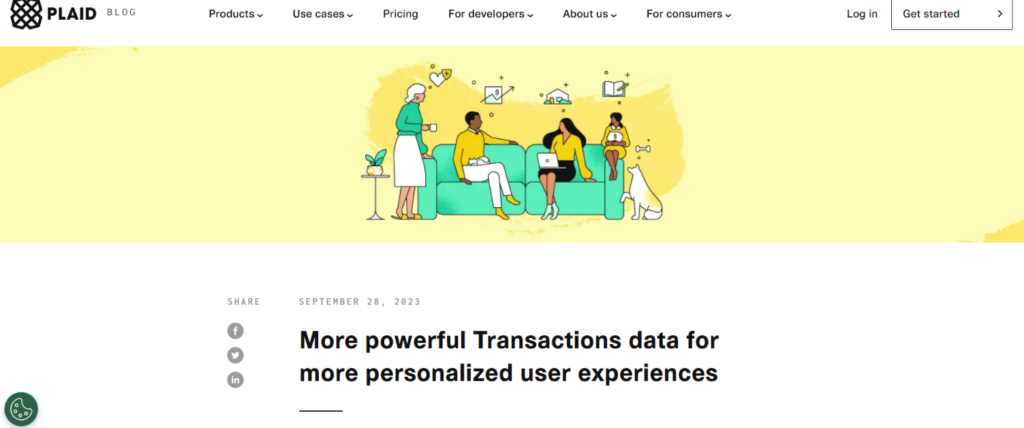
Plaid, a data network and payments platform, produced a good example of an upgrade announcement blog that does all the things an upgrade blog should do.
Their article announcing updates to the Plaid transactions product speaks about the culture of innovation within the business and goes in to detail about how the product works and what the enhancements mean for users.
Summing up
By running with these blog ideas, you’ll create compelling content that not only draws in your audience and builds trust, but also positions your fintech company as a thought leader. To attract and retain customers in the tough world of fintech, this is the spot where you need to be.
About Isoline Communications
At Isoline, we create engaging and informative content for ambitious B2B companies all day every day. And we really love doing it for fintech companies. Let us help you take your content strategy to the next level.
If you want to find out how Isoline Communications can help you deliver world-class content for your customers, get in touch now at hello@isolinecomms.com.



